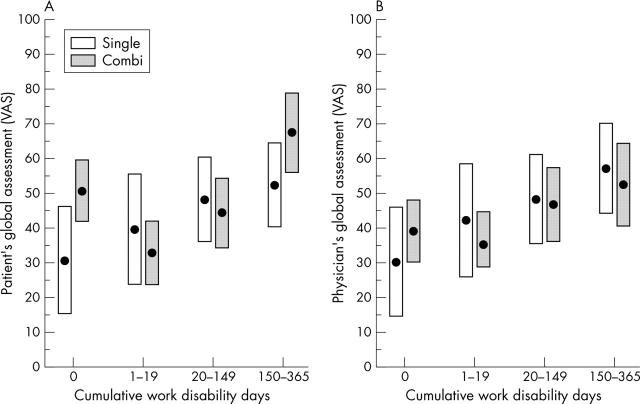Abstract
Patients and methods: In the FIN-RACo trial, 195 patients with recent onset RA were randomised to receive either a combination of DMARDs with prednisolone or a single DMARD for 2 years. At baseline, 162 patients were working or available for work. After 5 years' follow up, data on sick leave and retirement were obtained from social insurance registers or case records. The cumulative duration of sick leaves and RA related disability pensions was counted for each patient. To analyse predictors of productivity loss, the patients were divided into four groups according to duration of work disability per patient year.
Results: Patient's and physician's global assessment of RA severity ⩾50 and HAQ score ⩾1.0 were risk factors for extension of productivity loss (OR (95% (CI) 1.77 (1.00 to 3.16), 1.85 (1.03 to 3.32), and 1.78 (1.01 to 3.14), respectively). Additional risk factors were low education level (2.40 (1.18 to 4.88)) and older age (1.03 (1.00 to 1.06)); combination treatment was a protective factor (0.59 (0.35 to 0.99)).
Conclusion: At baseline, the risk of future productivity loss is best predicted by education level, age, global assessments of RA severity, and HAQ score.
Full Text
The Full Text of this article is available as a PDF (63.7 KB).
Figure 1.
Association of work disability category with patient's and physician's global assessment of the severity of RA at baseline. Age and sex adjusted medians (•) with 95% CIs.



